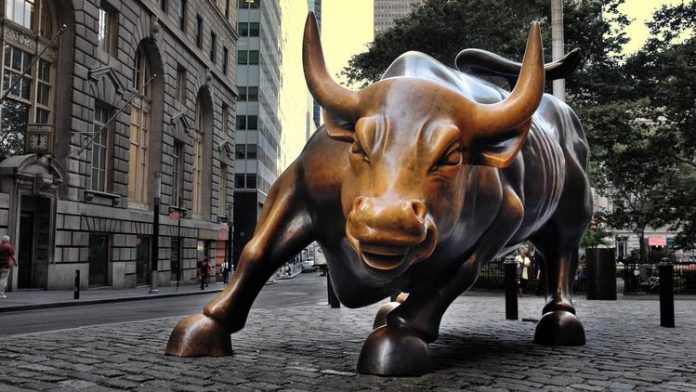Wall Street showed a glimmer of resilience today with stocks edging up at the open. This comes on the heels of a brutal sell-off that pushed the Dow into the red for the year. The S&P 500 and the tech-heavy Nasdaq saw modest gains as well. But don’t get too comfortable; the market had its share of morning jitters as 30-year Treasury yields hit the 5% mark for the first time since 2007 before retreating.
The recent stock sell-off isn’t just about equities; it’s tightly linked to the “pain trade” in bonds. Callie Cox, an investment analyst at eToro US, put it bluntly: “Yields are the biggest pain trade for all types of investors right now.” The era of low interest rates is closing its curtains, forcing a seismic shift in investment strategies across asset classes.
This shift toward higher interest rates has made traditionally “safer” investments like money market funds more appealing. “Interest rates fundamentally change how people think about their money and investing,” Cox said. This sentiment echoes Fed Chair Jerome Powell’s recent remarks that policy needs to be “restrictive” to bring inflation down to target levels.
The Fed’s projections indicate that interest rates will remain elevated for the foreseeable future. This has led to a surge in both 10- and 30-year Treasury yields, with the 10-year yield alone jumping about 50 basis points since the last Fed meeting. Keith Lerner, chief market strategist at Truist Wealth, noted that investors are demanding higher yields for the long-term risk, referring to this as the ‘term premium.’
Market participants aren’t just concerned about the level of rates; it’s the speed of the move that’s rattling cages. “What the market hates is when things move rapidly,” said Michael Antonelli, a strategist at Baird. Bank of America strategist Ohsung Kwon echoed this, stating that the market is more spooked by the “volatility of rates” rather than the rates themselves.
Despite the turbulence, Bank of America’s equity team still sees room for the S&P 500 to climb about 7% higher by year-end. They also see potential in the equal-weighted S&P 500, which isn’t as influenced by the tech giants that have driven much of 2023’s rally.
The market’s next directional cue could come from economic data. Antonelli suggests that weak economic data could actually provide some relief for stocks, especially if it indicates that the economy isn’t heating up enough to fuel further inflation. All eyes are now on the upcoming September jobs report, expected to show 170,000 new jobs and a slight dip in unemployment to 3.7%.
However, even a report in line with consensus may not calm jittery markets. Cleveland Fed President Loretta Mester was clear: if the economic landscape remains the same, expect another rate hike. This message was reinforced by two more Federal Reserve officials, adding fuel to the fire in the bond market.
Adding another layer of complexity is the political turmoil following the historic ouster of House Speaker Kevin McCarthy. The ensuing chaos and gridlock increase the odds of a U.S. government shutdown, adding yet another variable to an already volatile market equation.
So, what’s the takeaway for traders? The bond market is in the driver’s seat, and until there’s some equilibrium there, equities will struggle to find solid ground. The seasonal tendency suggests that we’ll see a bullish finish to October. And, given how oversold stocks currently look, that might just be what happens.








